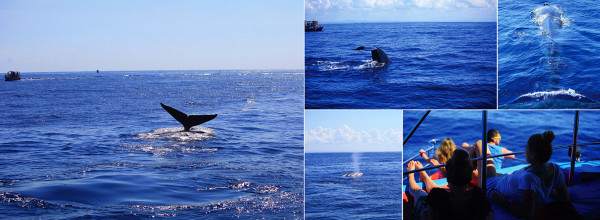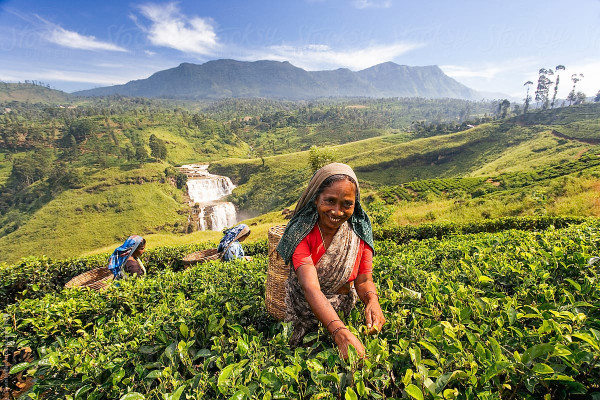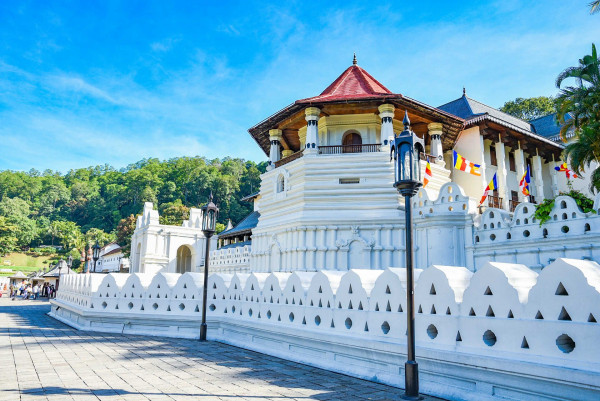Bundala National Park
Located about fifteen kilometers east of Hambantota Bundala National Park is one of Sri Lanka's foremost destinations for birdwatchers, protecting an important area of coastal wetland famous for its abundant aquatic (and other) birdlife. The park is also home to significant populations of elephants, Marsh & estuarine crocodiles, turtles & other fauna, including the leopard. Stretching along the coast east of Hambantota, Bundala National Park is ideal for instant gratification: in a four hour jeep ride, we can see elephants, 8ft crocs, giant squirrels & flamingoes. Afternoon safaris in the dry season (December - May) provide visitors with the best chance of seeing the wildlife.
Horton Plains National Park
Horton Plains National Park "Maha-Eliya" in Sinhala, is a national park in the highlands of Sri Lanka & one of the UNESCO World Heritage Site. It lies at a height of more than 2,000 m in the central highlands, and its altitude means that it has a much cooler and more windy climate than the lowlands of Sri Lanka, with a mean annual temperature of 16 °C rather than the 26 °C of the coasts. The area was named in 1834 after Lady Anne Horton, wife of Sir Robert Wilmot-Horton, then-governor of Ceylon.
Minneriya
Minneriya is a small town in Sri Lanka, and is famous for two things , for the great Minneriya lake build by King Mahasen and for the Minneriya wildlife sanctuary which is a hot spot for safari lovers because of the abandons of Elephants. Furthermore it is situated near Habarana which have some high class hotels for tourists and some famous world heritage sites like Anuradhapura, Polonnaruwa and Sigiriya which are relatively close to Minneriya.
Sinharaja Forest Reserve
Sinharaja Forest Reserve is a national park in Sri Lanka. It is of international significance and has been designated a Biosphere Reserve and World Heritage Site by UNESCO. The hilly virgin rainforest, part of the Sri Lanka lowland rain forests ecoregion, was saved from the worst of commercial logging by its inaccessibility, and was designated a World Biosphere Reserve in 1978 and a World Heritage Site in 1988. The reserve's name translates as Kingdom of the Lion.
Yala National Park
Yala National Park is a national park in Sri Lanka. The reserve covers 979 km², although only the original 141 km² are open to the public. It was established in 1894 as a Game Sanctuary. Much of the reserve is parkland, but it also contains jungle, beaches, freshwater lakes and rivers and scrubland. The latter zone is punctuated with enormous rocky outcrops. The range of habitats give rise to a good range of wildlife.
Udawalawe National Park
Udawalawe National Park lies on the boundary of Sabaragamuwa and Uva Provinces, in Sri Lanka. The national park was created to provide a sanctuary for wild animals displaced by the construction of the Udawalawe reservoir on the Walawe River, as well as to protect the catchment of the reservoir.
Kalpitiya
Despite its natural beauty, the western peninsular area of KALPITIYA in the Puttalam district of Sri Lanka is remarkably untouched by tourism. But for those lucky enough to visit, there's a plethora of things to see and do! With the small close-knit fishing community dominating the lives of the local people, visitors can get a real insight into working life away from the city. After watching the night fishing boats return in the morning, a visit to one of the fish markets offers the opportunity to choose the evening meal direct from the fresh catch! The Dutch Fort and St Peter's Kerk church in the town itself are interesting examples of Sri Lanka's rich history and colonial past. Leisurely boat rides up the lagoon and canoe trips down the river are a pleasant way of exploring the coastline, whilst 4WD jeep rides along the deserted sand dunes between the ocean and the lagoon offer a unique way of watching the colourful evening sunsets.
Wasgamuwa National Park
Wasgamuwa National Park is a natural park in Sri Lanka situated in the Matale and Polonnaruwa Districts . It was declared to protect and to make a refuge for the displaced wild animals during the Mahaweli Development Project in 1984 and is one of the four National Parks designated under the Project. Originally it was designated as a nature reserve in 1938, and then in the early 1970s the area was regraded as a strict nature reserve. Wasgamuwa is one of protected areas where Sri Lankan Elephants can be seen in large herds







